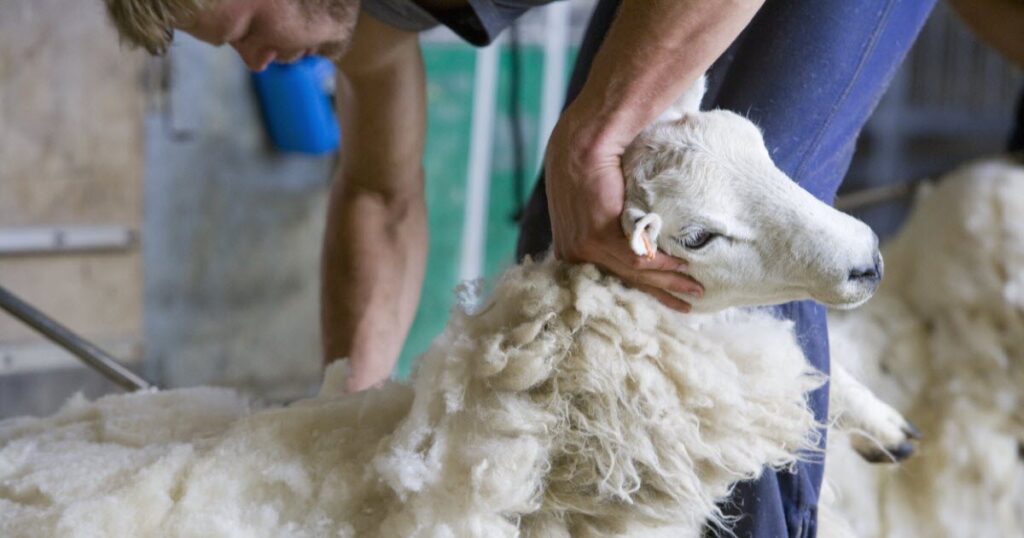Ever hesitate to wear wool because you think shearing hurts sheep? Well, there’s no need to worry. Shearing definitely doesn’t hurt sheep. In fact, sheep usually feel a lot better when we remove their heavy fleece.
Sheep farmers usually hire professional shearers to shear their sheep. These professionals expertly position the sheep so they stay controlled and comfortable throughout the process.
While it’s possible for an accident to happen and the sheep to end up injured, an experienced shearer knows how to shear sheep without causing injuries.
How are Sheep Sheared?
Shearing is the process through which shearers shave or cut off the wool from a sheep. A shearer should have appropriate knowledge and experience, so that they can shear the sheep quickly and without causing any kind of injury. (I have a guide about how to shear a sheep if you want to learn)
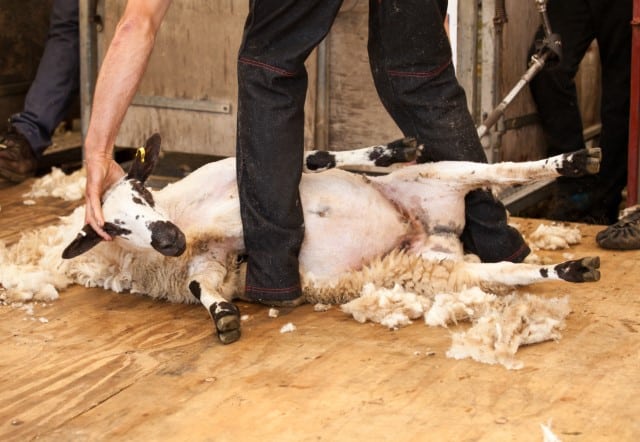
Electric shears and shearing machines are the most common kinds of equipment sheep shearers use. The fleece is kept in a single piece during and after shearing.
There are some cases where shearers use hand blades or scissors to manually shear sheep. If you want to be a sheep farmer, you will need to hire a professional sheep shearer to shear your sheep.
There are some farmers that try to shear their own sheep, but if you want a fine fleece without second cuts it can take years to master this skill.
How Often are Sheep Sheared?
Sheep farmers typically have their sheep sheared once every year.
Shearing is usually done in the spring months before lambing and the warm weather.
If you have sheep with especially long wool, you may have to shear them twice each year. Feeder lamb shearing usually happens in the summer months so that they’ll be more comfortable.
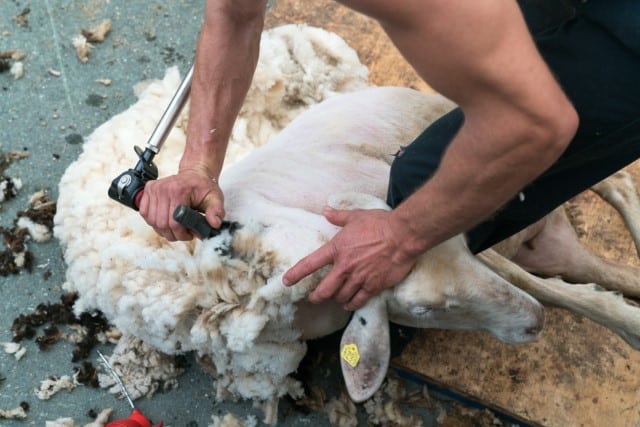
Ewe shearing should happen before lambing because it creates a cleaner lambing environment, making it safer for the baby lambs.
What Happens After Sheep Shearing?
We need to properly protect shorn sheep.
For example, many sheep will need protection from the elements outside. When a sheep doesn’t have wool, it lacks insulation, so you wouldn’t want to send it back outside in freezing temperatures. You also wouldn’t want to put sheep outside without access to shade or shelter, as the sun can be tough to withstand.
You can expect your sheep’s wool to grow in within about six weeks, and you can also use a coarser comb and cutter setup to leave a bit of wool on the sheep for protection.
Newly shorn sheep also need more food to help them stay warm.
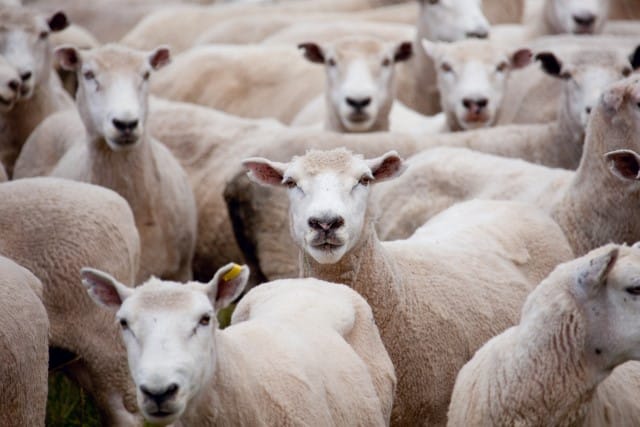
Never shear your sheep in the winter unless you have special housing that the sheep can constantly use to stay warm.
Sheep Wool Always Grows
Your sheep’s wool never stops growing. This is why periodic shearing is essential to the well-being of your animals.
If you don’t shear your sheep a minimum of once annually, it will feel very uncomfortable.
In fact, if the weather gets humid and hot, the sheep’s health could be at risk. Skin problems are a significant risk, as matting will certainly occur.
Hair Sheep Aren’t Sheared
Not every kind of sheep grows wool. Certain kinds of sheep grow hair instead.
We don’t shear hair sheep. That is because they don’t have wool.
If a sheep is a mixed breed of wool and hair varieties of sheep, it will probably need to be sheared.
What is Professional Sheep Shearing?
Engage a professional sheep shearer’s services to ensure your sheep are correctly and safely sheared.
A professional sheep shearer has extensive training and knows how to hold and manage the animals to keep them injury-free during the entire process.
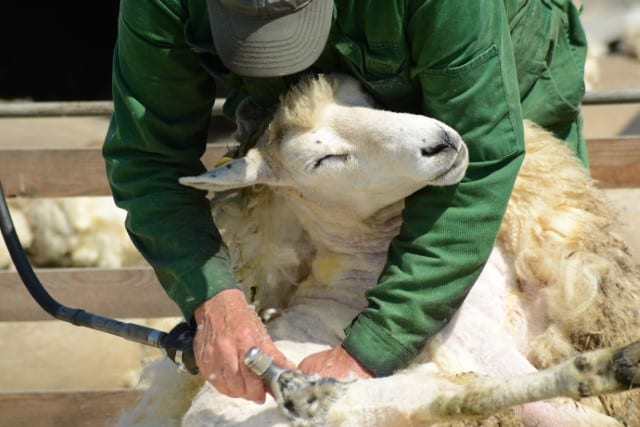
Professional shearers know how to harvest the wool without damaging it.
If you are a wool producer, this is extremely important. Professional sheep shearers are trained to use special tools for harvesting wool from sheep.
Why Do We Harvest Wool?
Humans have been harvesting wool for thousands of years, using the textile to produce clothing and other items. Wool is an ideal textile because of its versatile qualities.
Unless you have a wool-allergy, you will probably enjoy having more wool garments in your closet. Wool is also a popular textile for housewares, such as high-quality carpets.
Let’s take a look at some of the characteristics that make wool such a popular and versatile material.
Wool is Breathable
It may seem counterintuitive if you associate wool with heavy winter sweaters, but wool is a wonderfully breathable textile.
Wool is excellent at regulating moisture and keeping you comfortable in a variety of temperatures.

Different kinds of wool have different levels of breathability. For example, Merino wool is especially breathable and temperature regulating.
Wool is Flame Retardant
Wool is fire resistant, meaning it won’t catch fire easily. If wool ever catches fire, it will generally self-extinguish.
Wool is a Renewable Fiber
As long as there are sheep, there will be plenty of wool. Wool is a natural fiber and you can feel good about wearing and using it.
As a renewable resource, wool has little to no detrimental effect on the environment, and we don’t have to worry about running out of it. Wool is biodegradable.
Wool is Practical and Long-Lasting
If you want a durable natural fiber for outdoor activities, wool is a great choice. You get excellent UV protection when you wear a wool garment.
What Happens to Wool After Shearing?
Wool that has just been taken from the sheep is referred to as raw wool. This raw wool has to go through specific processes to make it fit to be made into textiles.
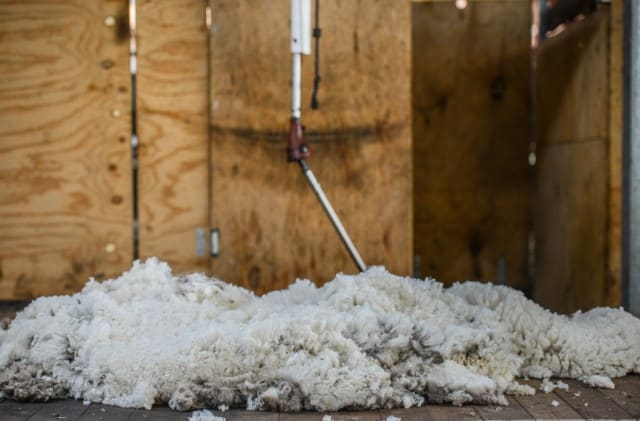
Wool producers have specialized washing, rinsing, and spinning procedures for processing raw wool. All of these processes are called wool scouring.
After this and some other steps are completed, wool is generally spun into yarn. Wool must be carded before spinning can take place.
Carding is when there is straightening and separation of the wool fibers, and you can do it at home with a good drum carder.
After carding when spinning is about to be done, the fibers are attached in a specific way to a spinning wheel. If you’d like to learn how to spin, here’s my list of the best spinning wheels for beginners.
Of course, after the wool is spun into yarn, it needs to be dyed. This is a laborious process and must be done correctly in order to create high-quality wool yarn.
Enjoy Wearing Wool!
There’s no need to worry that sheep have been hurt to produce your wool sweater.
Shearing doesn’t negatively affect sheep. In fact, these animals must be periodically sheared to keep them healthy and comfortable.

